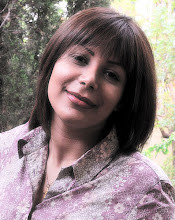
View of ST. Andrew's looking out over the harbour
I’ve always been a bit suspicious of Art History. When I was still at school and also when I went to Art School and the early 1980s, Art History was about the lives of painters and about ‘brush strokes.’ ‘The Renaissance,’ meaning the one that took place in Western Europe, was deemed to be centred in Italy, specifically Florence; this Renaissance was the back-bone of the subject. All other parts of the History of Art were somehow attached to or related to this time, place and collection of work. I still love Florence and I love what I learned of that time, but I’m very happy indeed that History of Art has become something else entirely, as East &West: Cross-Cultural Encounters eloquently demonstrated.
Orientalist Painting In Poland
The papers in this conference took me into corners of the history of the art that I didn’t know existed. I had no idea, for example, that Polish artists in the 19th Century were producing Orientalism in paintings every bit as rhetorical and absurd as anywhere in France or Britain. However, the underlying narrative, according to Ana Chruscinska, was predicated on Poland’s political situation, particularly its loss of independence, which prompted artists at that time to deploy the Orientalist imagery as a metaphor to describe Poland’s own subjugation.

Ana Chruscinska: Myths about the inhabitants of the Arab World as depticted in 19th Century Polish Oriental paintings
Hungarian Ottoman Woodcuts And Mock Battles
Also examining a nuanced relationship to imperialism and its imagery, AnnMarie Perl discussed the relationship between Hungarian and Ottoman artists during the Ottoman period when Hungary formed part of that vast empire. Far from being divided along cultural and ethnic lines, she argued that there was a well developed cross-cultural transfer which substantially unsettled the idea of an ‘authentic’ Ottoman aesthetic and genre. All this was discussed through book illustrations – wood cuts - and mock battles – yes Mock Battles –the Reenactment Society is not, after all, one of the more outré and eccentric inventions of Middle England, but was a major source of entertainment in the Ottoman Empire and documented in woodcut illustrations. Marvellous!
This, I discovered, was what I loved about Art History. It’s the weird little details which seep through and which tell you so much about the period. I was envisaging Hungarian and Turkish or Armenian or Greek artists dining together in each others houses and swapping tabards and swords before gadding off the local tea house to get uproariously drunk and party it up a storm in the street staging a mock battles till dawn when they’d be rounded up by the district gendarme for being drunk and disorderly and sent home to sober up.

Dr. Seung Jung Kim: The Beginnings of the East-West Dialogue: An Examination of Dionysiac Representations in Gahdhara and Kushan-Mathuran Art
Original Copies
Authenticity, as you might expect, was a dominant theme of the conference and it waltzed into view with Princess Akiko’s paper on the gentle art of reproduction. Her focus was on the repros of Japanese artefacts in the British Museum. Konstanze Knittler talked about ‘Famille Noire’ - a very weird-looking kind of porcelain that I’d never heard of – with a very intriguing story attached. It seems that hundreds of wealthy collectors have collected thousands of pieces of black porcelain believing them to belong to a much appreciated part of Chinese porcelain history – the Kanxi period, (1622-1722), and that this ‘famille’ turns out to be the bastard progeny of another period entirely – late 19th Century – Perish the thought!! This, along with Princess Akiko’s paper, neatly encapsulates much of what the conference discussed, namely, who’s to say what’s authentic and what if the reproduction is really more interesting than the ‘original’ ?

Dr. Claudia Clare: The Artist and the Coup D'Etat: A User's Guide to Exhibiting Ceramics in Politically Unstable Situations
Seen Through The Lens
The lens – the fiendish camera – popped up every so often. It began the conference and ended it – in a way – and it appeared in the middle cleverly disguised as paintings by Jackson Pollock. This was about a group of Japanese artists - the Gutai group, based in Osaka in the 1950s. They are widely thought to be influenced - almost formed really – by Jackson Pollock and that their work sprang out of and responded to his as an homage. However Natalie Roncone’s paper showed that what they were responding to was not Pollock’s painting or his writing but to a collection of photographs by Hans Namuth of Pollock ‘in action,’ published in a 1951 issue of ‘Art News.’ In other words their ‘homage’ was predicated on someone else’s interpretation and mediation of Pollock’s work.

Dr. Luke Gartlan: Portraying China's 'Character': Baron von Stillfried's Portfolio of Shanghai Photographs
Confusing The Image
This first appearance of the camera was in the Keynote speech by Dr. Luke Gartlan, about a collection of 19th Century photographs of ‘life’ in China which failed to attract buyers and was quickly abandoned. Gartlan argued that the main reason for this was that this album of, let us say, ‘images of China’ did not meet or in any way match the image of that country that the Western consumer expected. He compared it to similar albums made by the same photographer, Baron von Stills, of Japan which sold in their thousands. They look remarkably similar. And that’s the rub. They weren’t supposed to. China was considered an, ‘unpaved, dirty, stinking,’ place, quite different from the elegant, stylish exotic Japan. The Western Consumer duly turned up its western nose and refused the offering.

Shirley Bahar: A War Within: The Westernized Performance of Israeli Artists
Had We But World Enough And Time…
This is such a tiny bite of what was really a feast of careful, passionate research and lovingly honed knowledge. There were papers on consumers of Manga, on queer masculinity and nationalism, (possibly), in Japanese / (American?) photography, on masculine self reflexivity in Israeli film, on 18th Century Chinese court paintings, on Graeco-Roman representations in Kushan Buddhist art, on contemporary Chinese calligraphy, on Orientalist bookcovers in contemporary Western publishing, and on a kiln maker and designer of production methods in the Leach pottery, by name of Matsubayashi Tsurunosuke, who’s immense contribution to that pottery and, by implication, to British studio pottery, has been largely written out of the history. All of this was served up with delicious food, sunshine and a fabulous beach in one of the most beautiful towns I’ve seen in years. My thanks to the organisers, to my fellow participants, and to Ana Chruscinska and, (again), the conference organisers, who made the final lens-based contributions by providing all of the photographs on this post.

Dr. Shinya Maezaki: A Legacy of Matsubayashi Tsurunosuke in St. Ives: Introduction of the Art of Japanese Ceramic Making to British Studio Pottery












































No comments:
Post a Comment